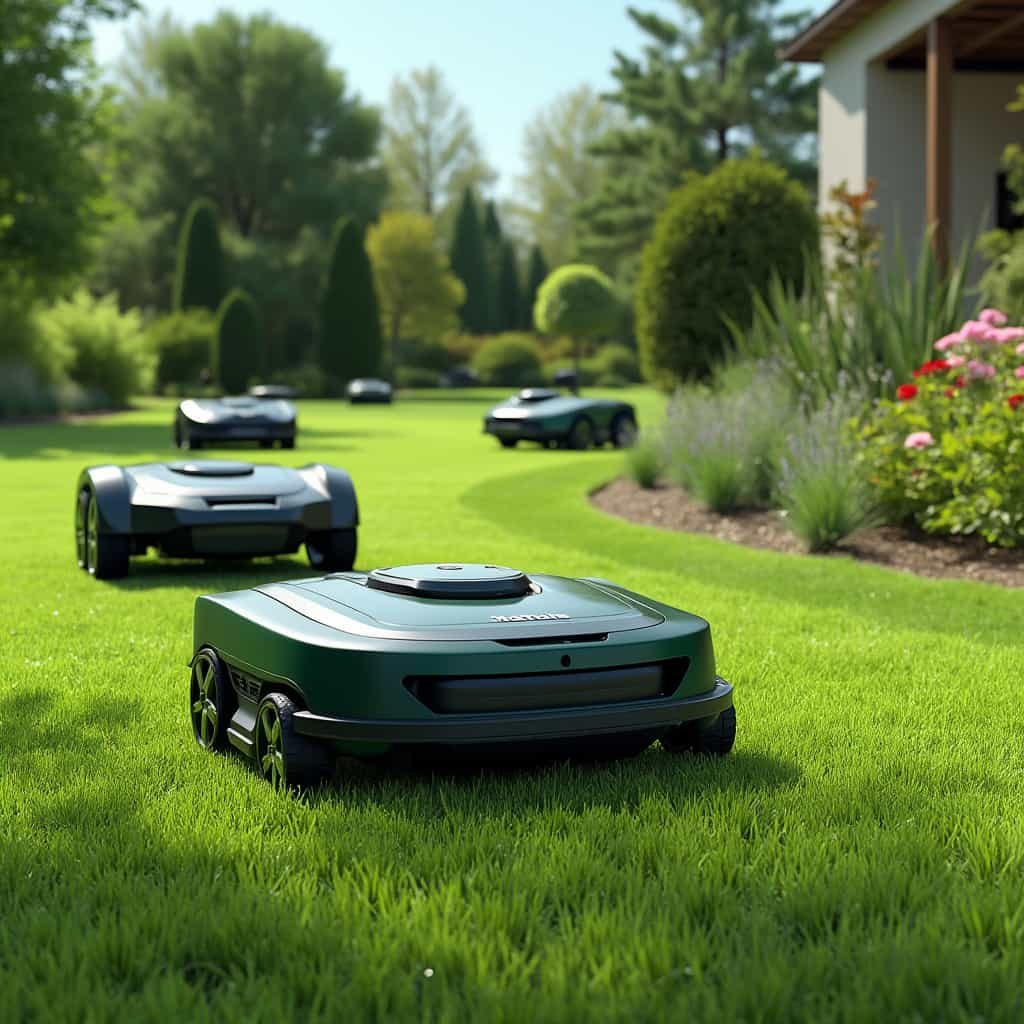The technologies that are transforming our everyday lives aren't stopping at the garden fence either. Robotic lawnmowers have become an indispensable tool for many gardeners who value a perfectly manicured lawn without having to spend hours mowing it themselves. But what makes these devices so popular, and what are the differences between the models?
A typical feature of robotic lawn mowers is their autonomous operation. The mowers are equipped with sensors that help them avoid obstacles and mow the lawn efficiently. Many models use advanced route-planning algorithms to ensure no blade of grass is left unmowed. These sensors are so sensitive that they can even detect changes in the weather and interrupt their work in rainy weather to avoid damaging the lawn.
A very important criterion when choosing a robotic lawn mower is the cutting width and cutting height. Smaller models often have a cutting width of around 17 centimeters, making them ideal for small and narrow gardens. Larger models, on the other hand, can mow widths of over 30 centimeters and are designed for expansive lawns.
Battery life varies considerably depending on the model. Basic models offer runtimes of around 60 minutes, while high-end models can mow for up to four hours without needing to recharge. The charging process itself is usually fully automatic: The mower returns to the charging station when the battery level is low. Experts recommend choosing models with lithium-ion batteries, as they are more durable and environmentally friendly.
Robotic lawnmowers aren't the only thing that appeals to tech geeks: design-conscious gardeners also get their money's worth. Many mowers are elegantly and compactly designed, blending harmoniously into the garden ambiance. One well-known manufacturer even enlisted the help of a renowned industrial designer to create its models—a sign of how high aesthetic standards have become.
Of course, there are also disadvantages to using robotic lawn mowers. A frequently cited criticism is the need for regular maintenance. The blades need to be cleaned frequently and sharpened or replaced as needed. The navigation system can also be prone to malfunctions, especially when environmental conditions change or the lawn has an uneven topography.
Most robotic lawn mowers range in price from €500 to €2,000, although luxury models can be significantly more expensive. Consumers recommend considering not only the price but also the associated warranty terms when making a purchase. Manufacturers typically offer a two-year warranty, but some premium providers even offer extended warranties of up to five years, which is particularly reassuring given the investment.
The environmental impact of robotic lawnmowers is also interesting. Since the devices are battery-powered, they don't emit exhaust fumes, which is a clear advantage over gasoline-powered lawnmowers. Some environmentalists even praise the effect of regular mowing by robots, as it can contribute to promoting biodiversity—a perfectly maintained but healthy lawn provides a habitat for many small insects.
Historically, the development of robotic lawnmowers is a prime example of technological progress in everyday life. As early as the 1960s, futuristic visions envisioned autonomous lawnmowers, but it wasn't until advances in sensor and battery technology that these visions became a reality. Today, we see models connected to smart grids and controlled via smartphone apps, further enhancing user-friendliness.
In conclusion, robotic lawn mowers represent an impressive solution for anyone who wants a well-maintained lawn with minimal effort. While the initial investment may be substantial, the benefits—from time savings to environmental friendliness—are undeniable. However, those deciding to purchase one should consider not only the price but also the individual requirements of their own garden and the corresponding technical features of the models.
You may also like
The Top Above-Ground Pools of 2025
Dive into the latest trends in above-ground pools for 2025, exploring innovative features, pros and cons, price ranges, and warranty options. As these pools soar in popularity, understanding their benefits and potential drawbacks is essential for prospective buyers.
The opening of the Nintendo Museum in Kyoto: A new paradise for video game enthusiasts
The recently opened Nintendo Museum in Kyoto offers visitors a fascinating journey through the history and development of the famous Japanese video game brand. Focusing on the themes of popular Nintendo games and accessories, the museum is a must-see for fans from all over the world. Visitors can enjoy interactive exhibits and immerse themselves in Nintendo's past and future.
Robot lawnmowers: The path to the perfect lawn
Robotic lawnmowers have revolutionized garden care. This article examines the technical features, advantages and disadvantages of various models, and highlights costs and warranty options.
The Anticipated Launch of Nintendo Switch 2: A Glimpse into the Future of Gaming
The gaming world is abuzz with excitement as Nintendo gears up to release the much-awaited Nintendo Switch 2 in 2025. This article delves into the console’s technical specifications, potential advantages, disadvantages, pricing, and warranty options, providing gamers with a comprehensive understanding of what to expect.
